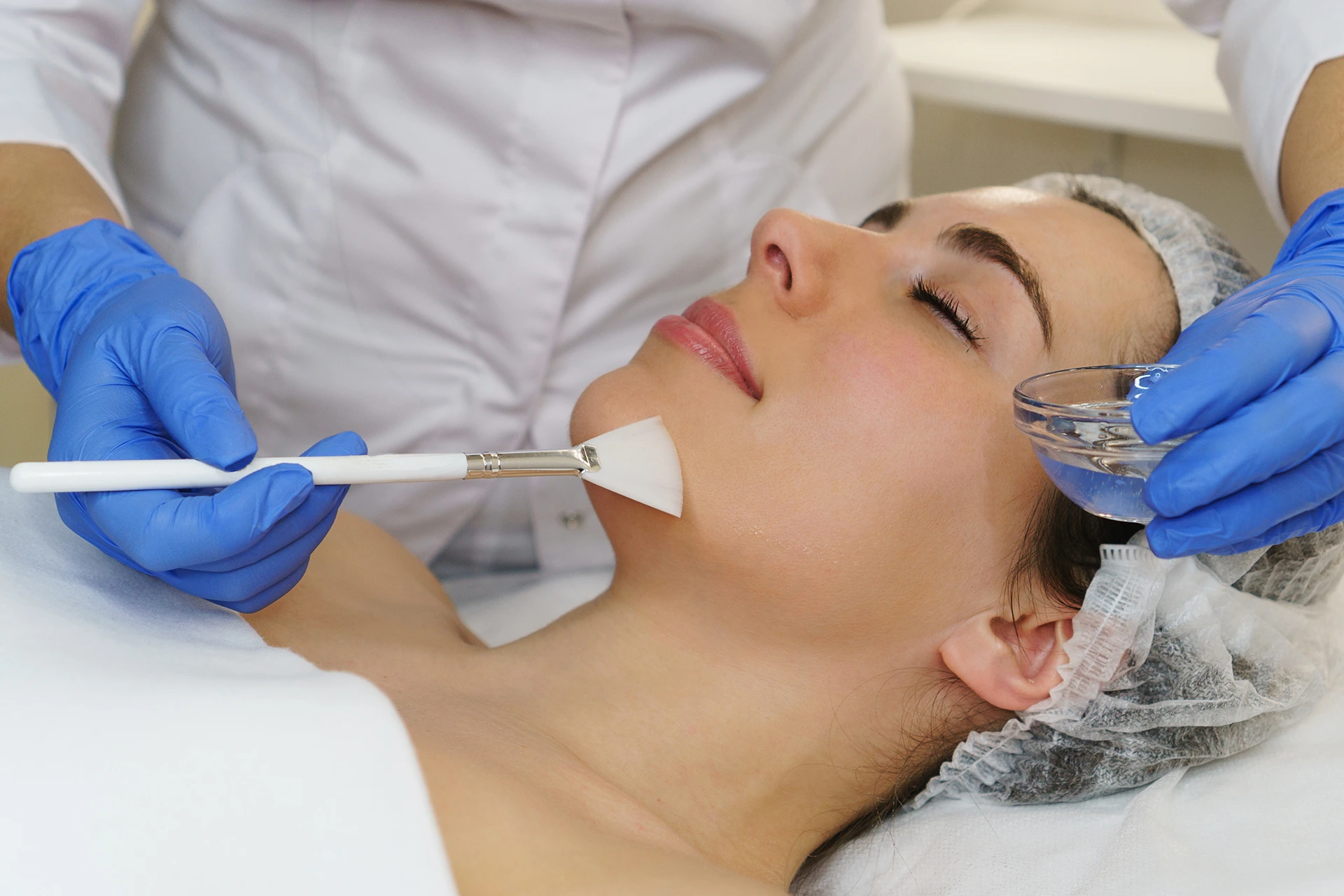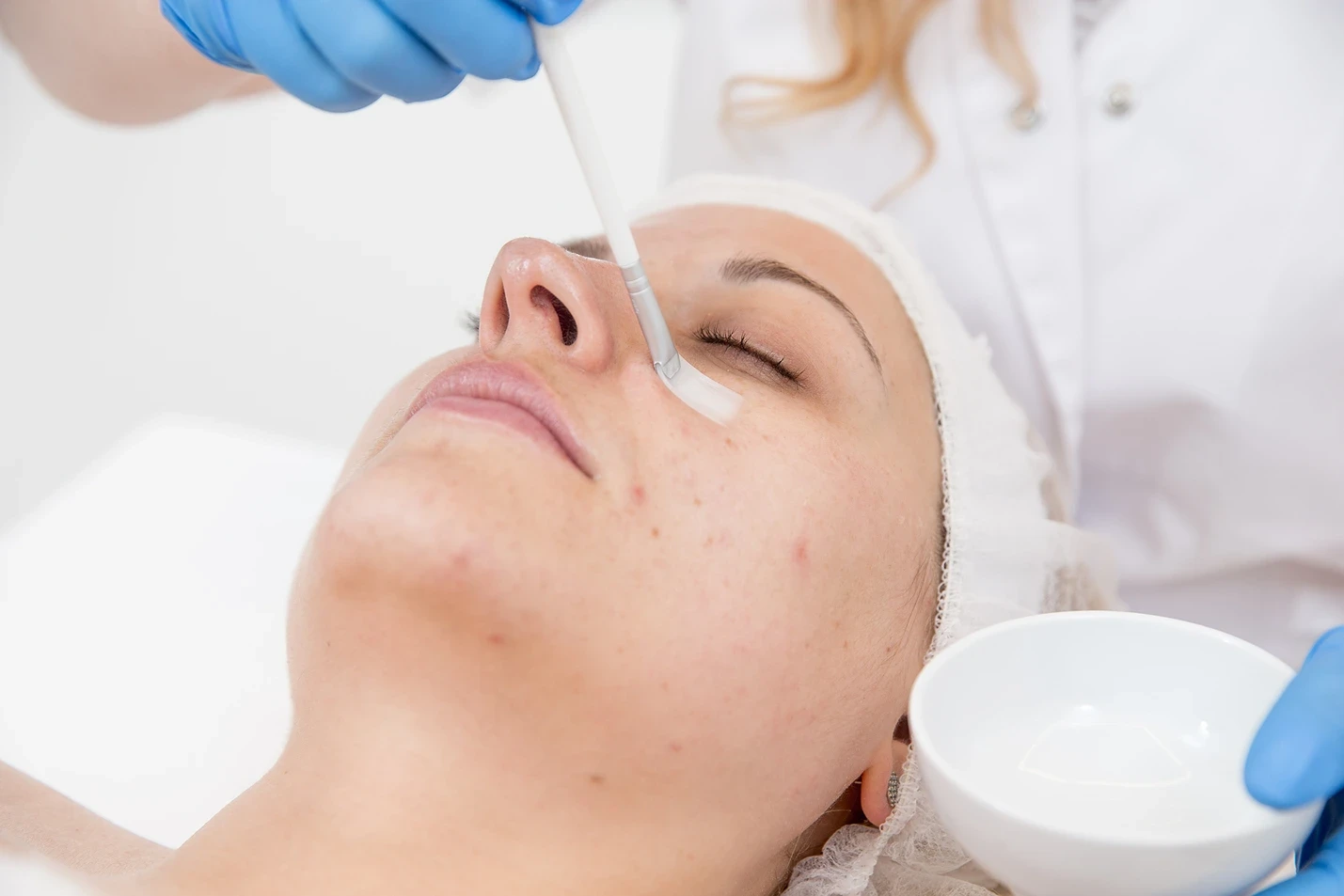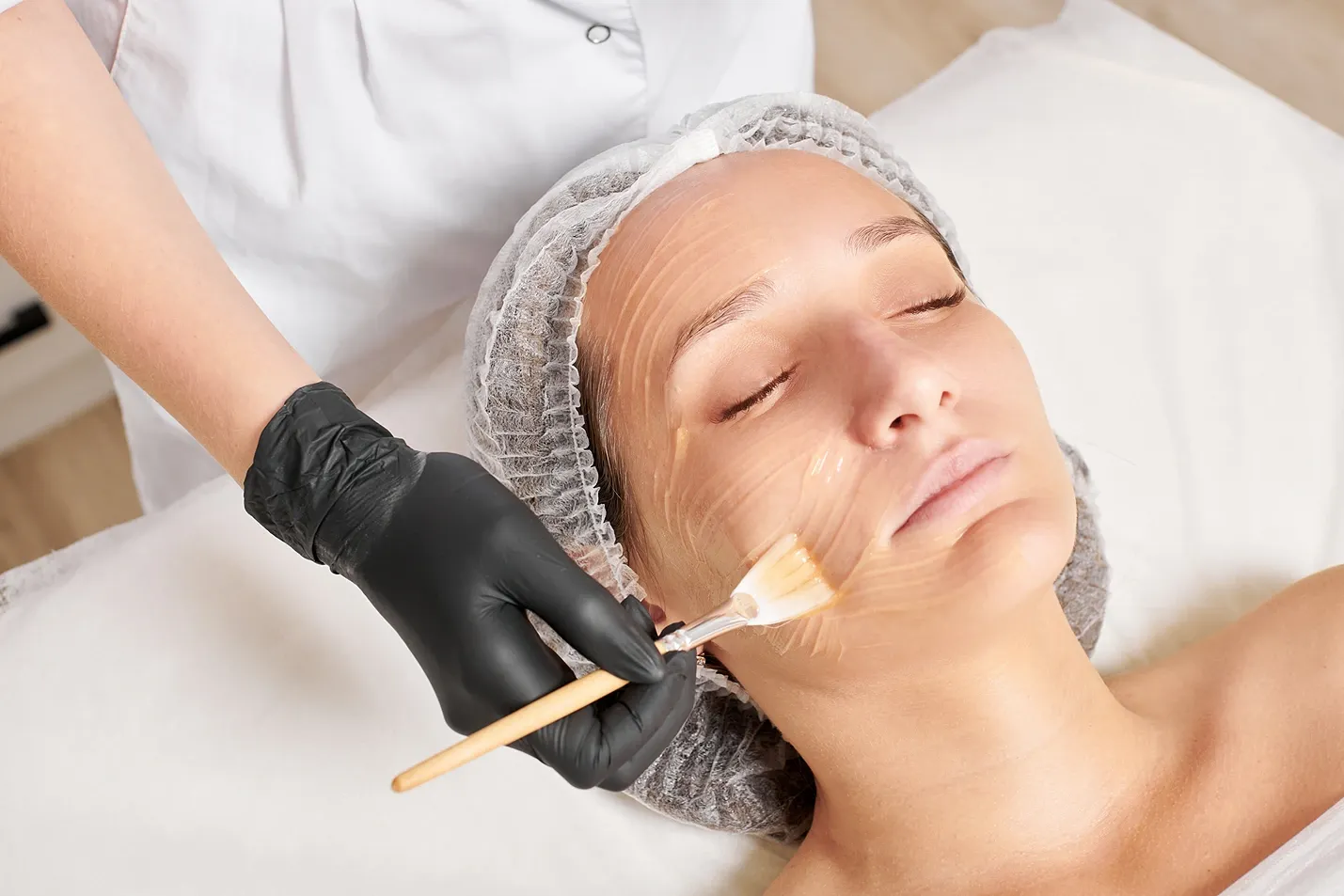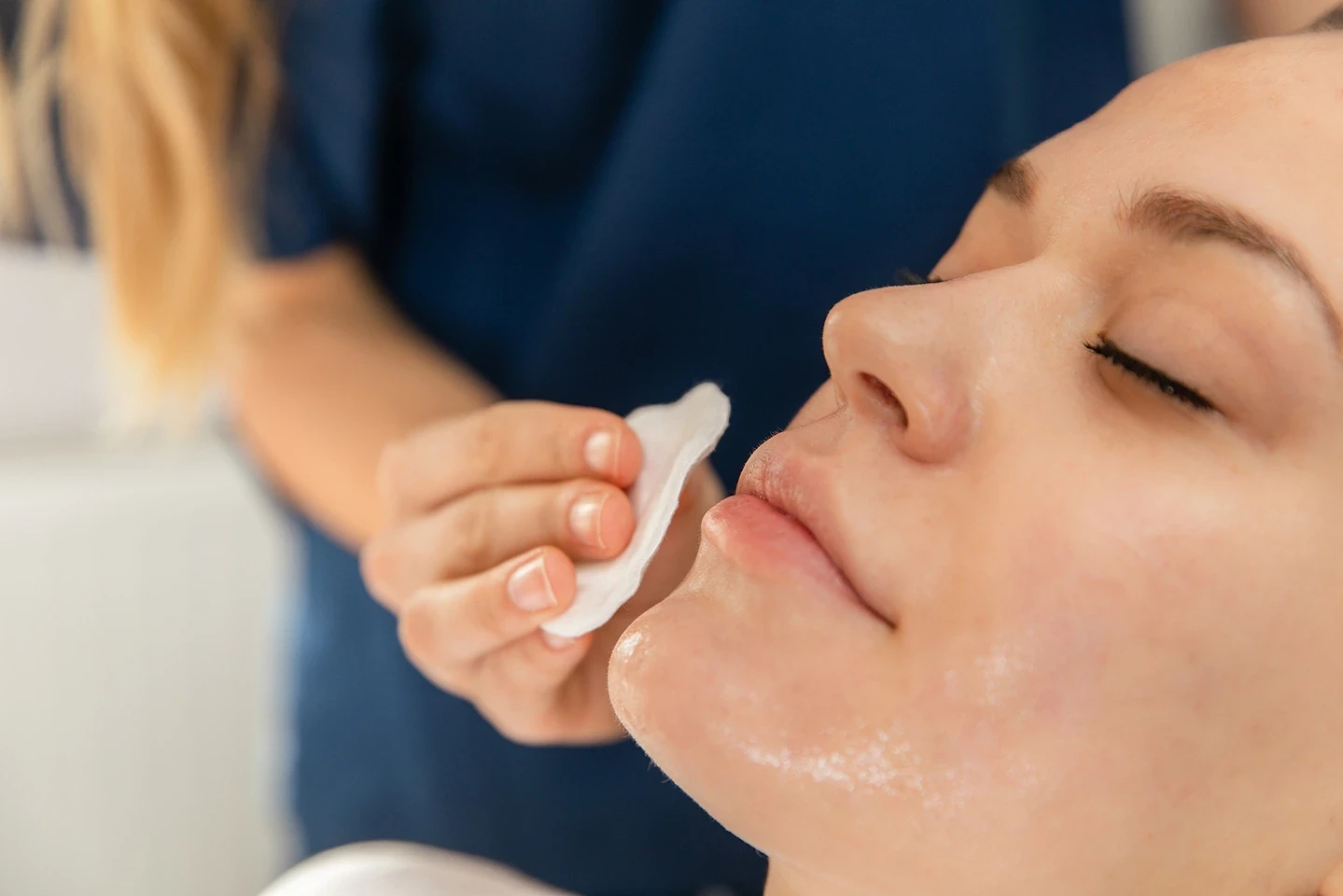Get to know chemical peels and how they can transform your skin by banishing melasma
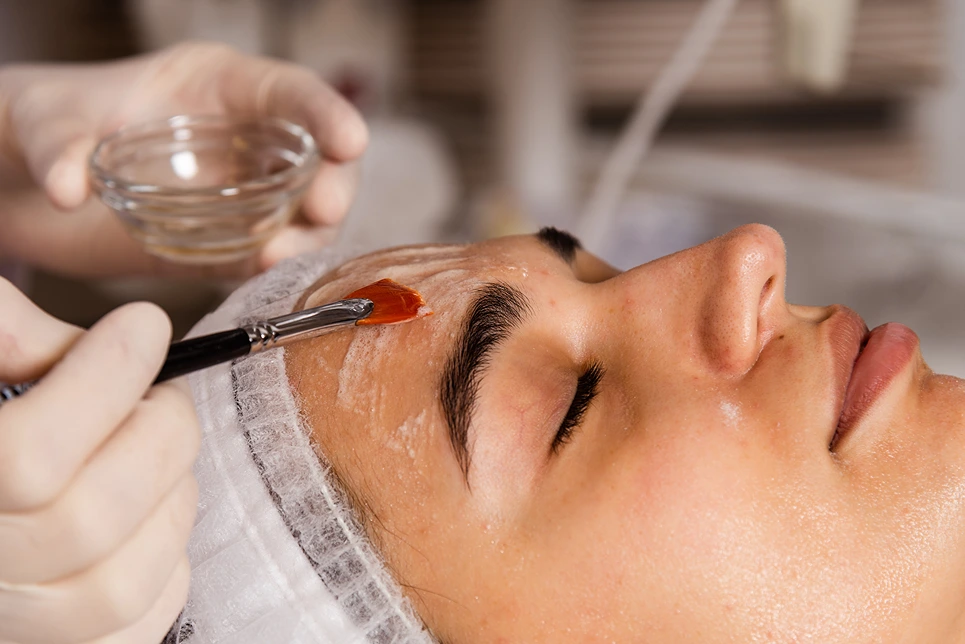
Chemical peels are commonly used to treat melasma. Different types of chemical peels like glycolic acid, salicylic acid, trichloroacetic acid, Jessner’s solution, and tretinoin peels have been shown to improve the appearance of melasma over multiple treatments.
Are Chemical Peels Good for Melasma?
Chemical peels can be an effective treatment for melasma, especially glycolic acid peels.
Glycolic acid peels are considered a good first line treatment as they are relatively gentle and can help improve mild cases of melasma and skin texture over multiple treatments.
Deeper peels like TCA peels may be more effective but also carry higher risks of side effects like scarring or post-inflammatory dyschromia in patients with dermal melasma.
Proper patient selection is important to minimize risks, and most sources recommend 8-10 glycolic acid peel treatments spaced 2-4 weeks apart to see significant fading of melasma.
Can Chemical Peel Remove Acne and Melasma?
Yes, chemical peels can help remove acne and reduce the appearance of melasma when used appropriately for the skin type.
Specifically:
Chemical peels are effective in treating melasma and removing discoloration on the skin. Ethanol solutions of salicylic acid are excellent peeling agents for numerous conditions including acne and melasma in dark-skinned individuals.
How Chemical Peels Help With Melasma
Chemical peels can help improve the appearance of melasma by targeting the epidermal (outer skin) component of melasma.
Specifically, glycolic acid peels are commonly used and can significantly reduce the appearance of melasma over time with multiple treatments (typically 8-10 treatments).
However, chemical peels are better avoided for dermal melasma, which affects the deeper dermal layer of skin. The search results also indicate that chemical peels work best as an adjunctive treatment together with other treatments like lasers.
While some sources state chemical peels are safe and effective for eliminating and preventing melasma, others recommend consulting a dermatologist first due to the risk of hyperpigmentation if the peel is not properly administered.
Chemical Peel as a Treatment for Melasma
- Chemical peels constitute the second-line of management in melasma, improving the epidermal component.
- Peels have proved to be useful agents for melasma both as a sole treatment as well as an adjunct to other topical therapies.
- Glycolic acid peels are a common chemical peel treatment option for melasma. Derived from sugar cane, glycolic acid is cousin to citric and lactic alpha hydroxy acids (AHAs) that are used in chemical peels.
- A glycolic peel can significantly reduce the appearance of melasma over time. Users generally see the most dramatic improvements with eight to ten treatments, administered every 2-4 weeks.
- Chemical peels remain a viable option for melasma treatment, particularly when other treatments are less effective.
- The solution used in chemical peels exfoliates layers of the skin to address melasma and other skin issues like age spots.
Is It Good to Peel Your Skin When You Have Melasma?
Yes, chemical peels can be an effective treatment for melasma when done properly.
Glycolic acid peels are commonly used and can significantly reduce the appearance of melasma over time, especially with 8-10 treatments.
However, patients with darker skin types (Fitzpatrick scale III and above) who are considering deeper peels should be careful due to risks of post-inflammatory hyperpigmentation.
Deeper peels offer more anti-aging benefits but require anesthesia and more downtime. They carry higher risks of side effects for melasma patients.
Chemical peels work best as an adjunct treatment combined with other therapies, not as a sole treatment.
Different Types of Chemical Peels for Melasma
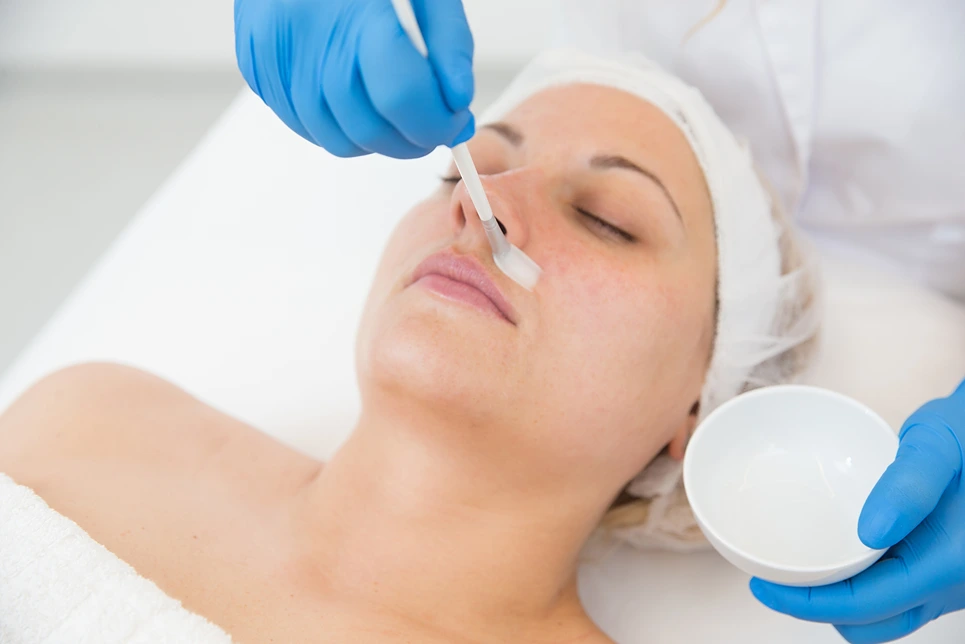
These are the main types of chemical peels used for Melasma:
- Glycolic acid peels are mentioned as an effective option that can significantly reduce the appearance of melasma over time, especially with 8-10 treatments.
- Lactic acid peels, mandelic acid peels, and modified Jessner’s peels are also cited as favorites for treating melasma.
- Trichloroacetic acid (TCA) peels and peels containing hydroquinone are mentioned as well.
- The VI Peel, classified as a medium-depth peel, is said to be safely used on all skin types for stubborn melasma according to one dermatologist.
Choosing the Right Chemical Peel for Melasma
Glycolic acid peels seem to be recommended most often for melasma, as they are effective yet gentle. Lactic acid peels are also good options as they have barrier-restorative properties.
Deeper peels like TCA peels should only be done by experienced professionals for melasma, as they carry a higher risk of worsening hyperpigmentation if not done correctly.
It’s important to prep the skin with melanin inhibitors prior to peels to help prevent darkening of melasma.
Patient selection is key – those with darker skin tones or a history of melasma will need a gentler peel under close supervision of a professional.
Post-peel care with sun protection and topical therapies is essential to help improve melasma and prevent worsening.
How Many Chemical Peels for Melasma?
The number of sessions required for Melasma can vary depending on individual factors like skin type, melasma severity and type of chemical peel used. Deeper peels tend to require fewer sessions than milder peels.
- Most sources recommend 4-6 chemical peel sessions spaced 4-6 weeks apart to treat melasma.
- Some peels like glycolic acid may require 8-10 sessions to see significant improvement in melasma.
- Deeper peels like TCA peels recommend only 1-3 sessions for melasma with spacing of 4-6 weeks in between to allow skin healing.
- Single session peels like VI Peel showed benefit for melasma in one patient but more studies would be needed to generalize.
Melasma After 1 Chemical Peel: What to Expect
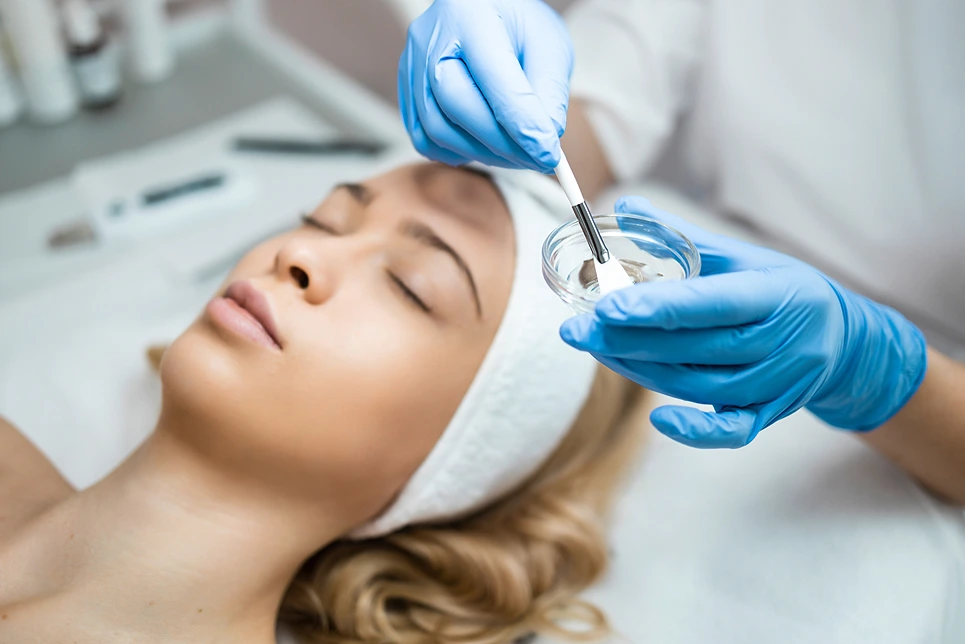
Here is what one can expect after a single chemical peel for melasma:
- Peeling of the skin starts around 3-5 days after the treatment. The peeling is a normal part of the skin’s healing process.
- The skin in the treated area may appear roughened, patchy and darkened temporarily for a few days after the peel as it heals.
- Redness, swelling, stinging and flaking of the skin in the treated area as it heals, which usually lasts 1-7 days depending on the strength of the peel.
- The treated skin may be temporarily lighter or darker than the surrounding untreated skin as it heals and regenerates after the peel.
- It can take up to 21 days for the skin to fully heal after a chemical peel depending on the peel’s strength.
A single peel may provide some improvement in melasma, but several treatments may be needed spaced 4 weeks apart to see full results, as melasma often requires multiple treatments for lasting improvement.
How Often Can I Do a Chemical Peel for Melasma?
It’s generally not recommended to do more than 2 chemical peels per year when actively treating melasma to avoid over-exfoliating the skin and worsening the condition.
Consulting a board-certified dermatologist is important to determine a safe peel schedule tailored to your individual skin characteristics and melasma severity.
Some general guidelines for chemical peels and melasma include:
Mild chemical peels like glycolic acid peels can be done every 2-4 weeks. These peels help exfoliate the skin and promote cell turnover which can help fade melasma spots over time with consistent use.
Medium-strength peels containing trichloroacetic acid (TCA) or Jessner’s solution should be spaced 4-6 weeks apart to allow the skin enough time to heal between treatments. These peels are more effective at treating melasma but also carry a higher risk of side effects like post-inflammatory hyperpigmentation if the skin is not given adequate time to recover.
Deep phenol peels should only be used under direct medical supervision and with intervals of 3-6 months or longer between treatments. Phenol carries the highest risk of complications for melasma if not performed properly.
Chemical Peel for Melasma Side Effect
Some potential side effects of chemical peels for melasma include:
- Temporary redness, dryness, stinging, and mild swelling.
- Peeling of the skin, which is a sign that the top layers are shedding. Peeling typically occurs 3 days after the procedure and is more noticeable with medium-to-deep peels.
- Hyperpigmentation or darker skin where the peel was applied. This can occur if the treatment is performed incorrectly.
- Hypopigmentation or lighter skin where the peel was applied.
- Potential for infection.
Side effects for superficial peels are typically mild and similar to a sunburn, resolving within a few days. They include redness and minor inflammation.
Melasma vs Hyperpigmentation Chemical Peel

Melasma and hyperpigmentation are both conditions that cause darkening of the skin.
However, they differ in their appearance and underlying causes:
- Melasma appears as symmetrical brown patches on the cheeks, forehead, upper lip and chin. It is more common in women, especially during pregnancy or hormone therapy.
- Hyperpigmentation can occur anywhere on the skin as an isolated spot or irregular patch. It has a variety of causes including sun exposure, inflammation, and skin injuries.
Both conditions can be treated with chemical peels.

